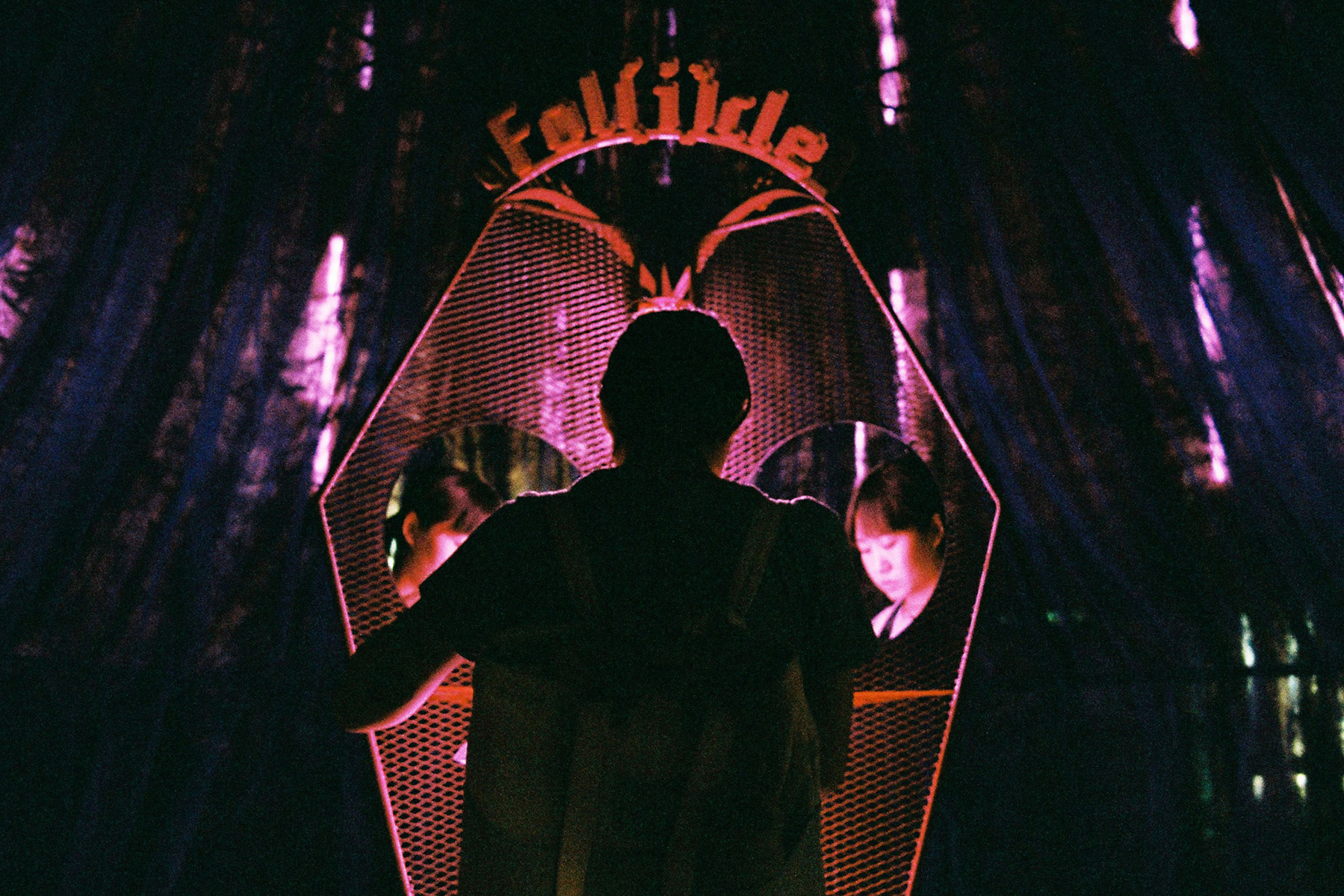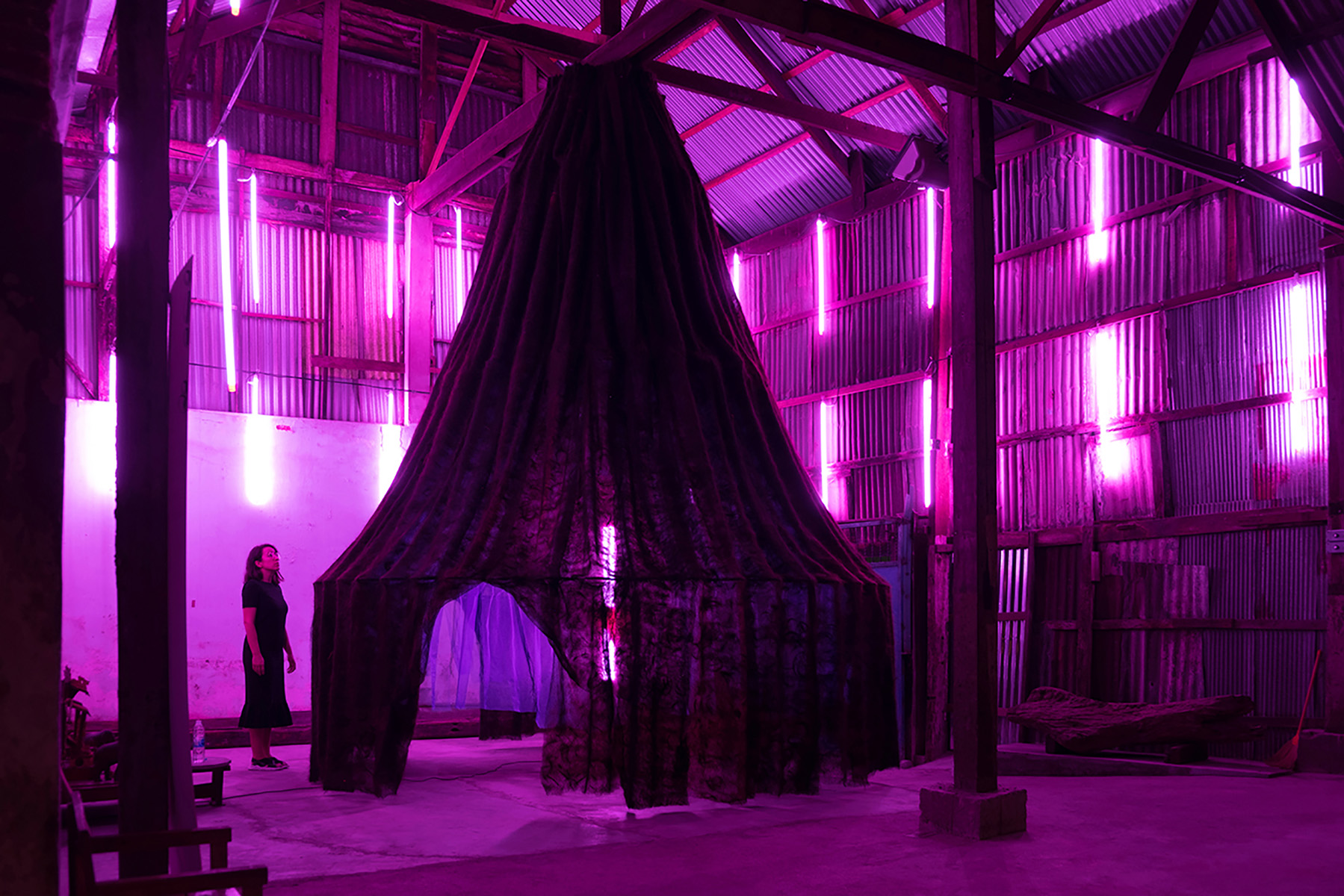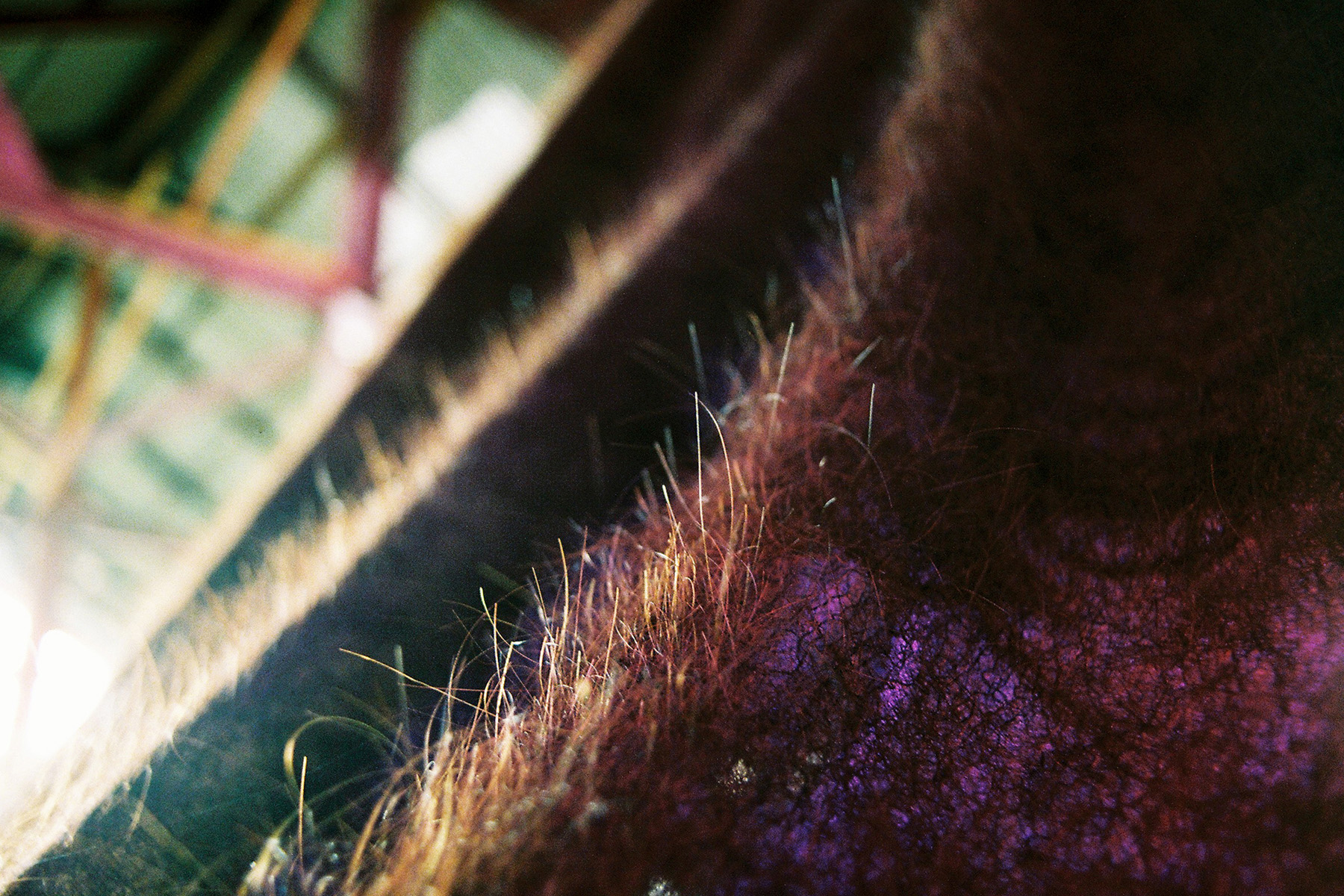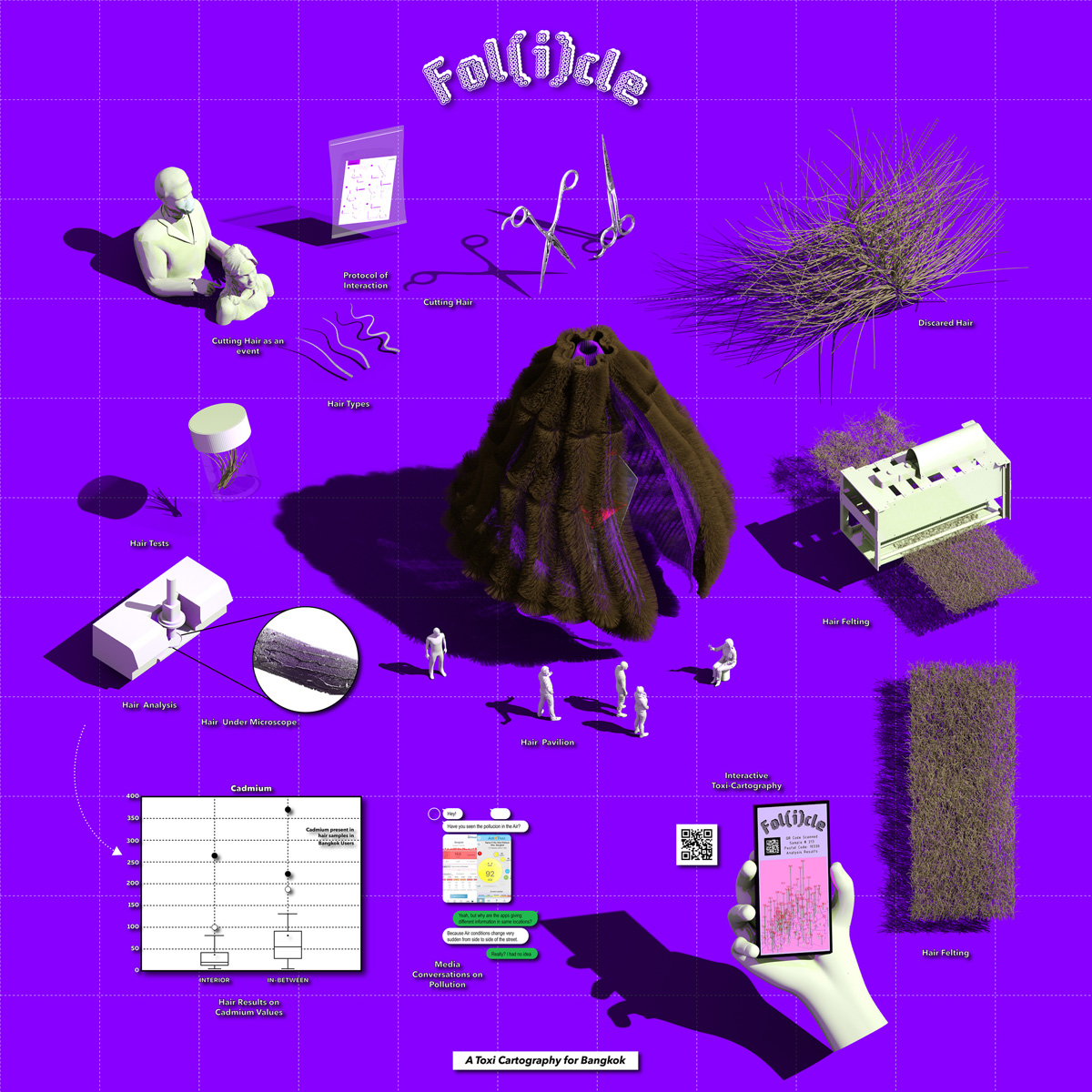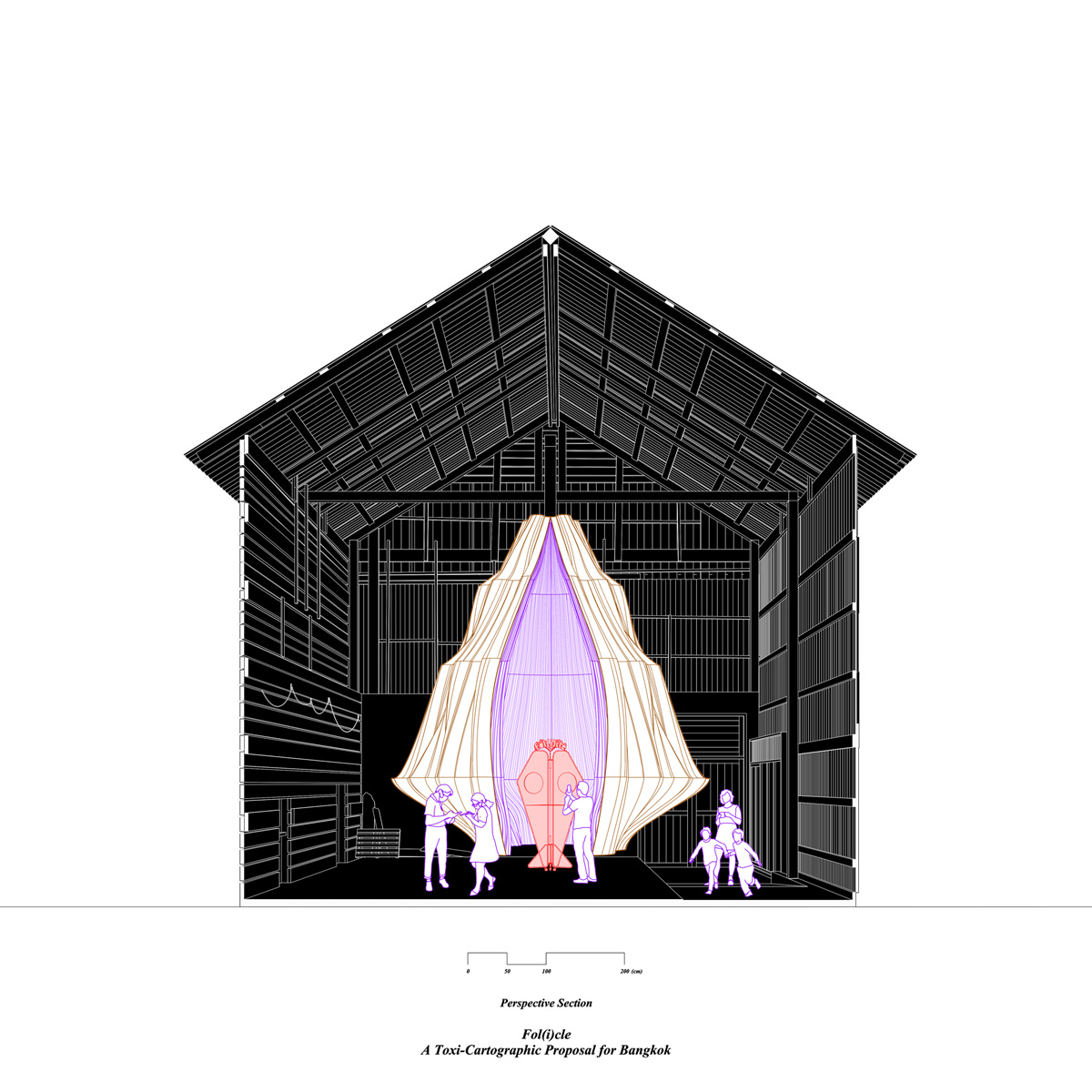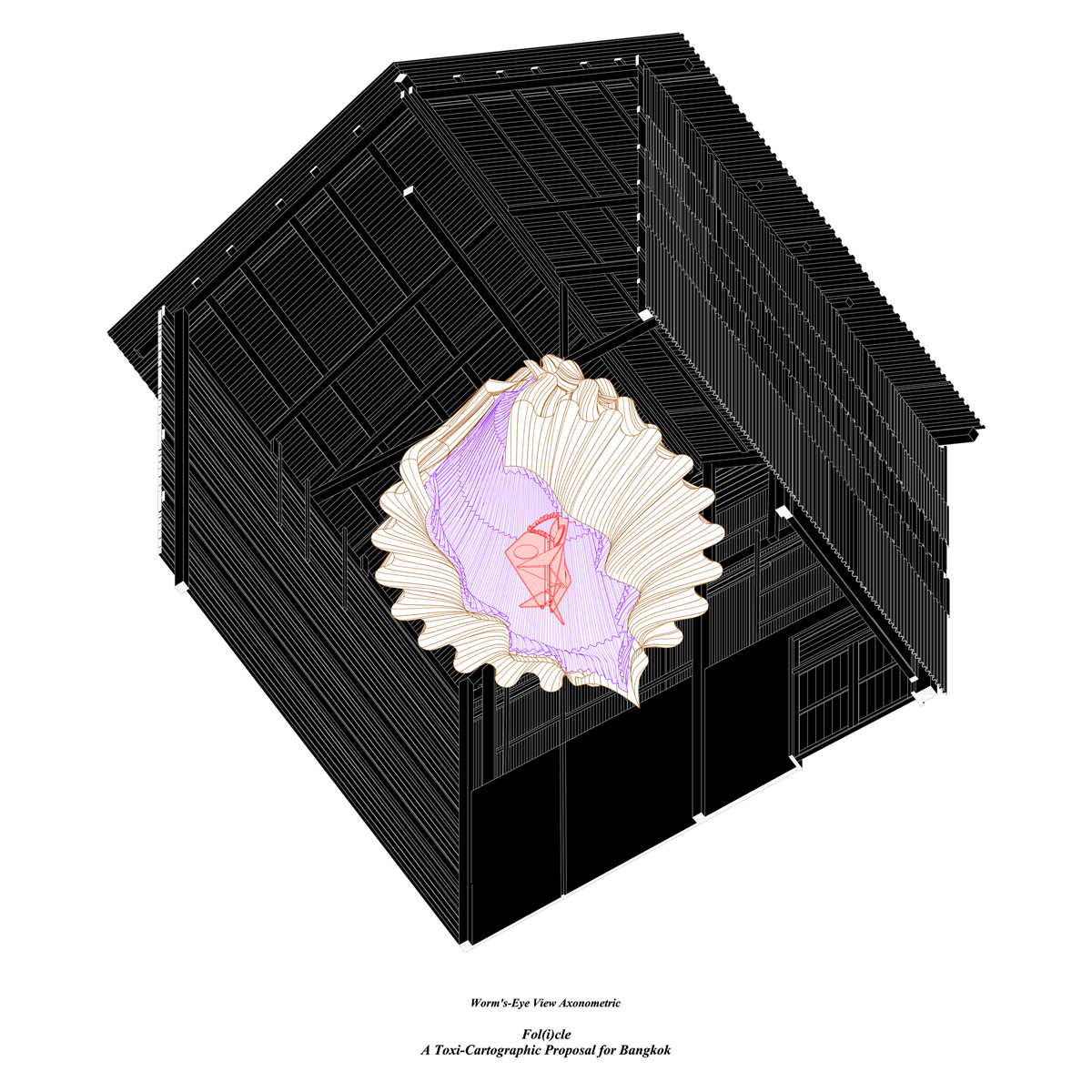Foll(i)cle. A Toxi-Cartographic Proposal for Bangkok
Pareid / The Bartlett School of Architecture (Bangkok, Thailand, 2019)
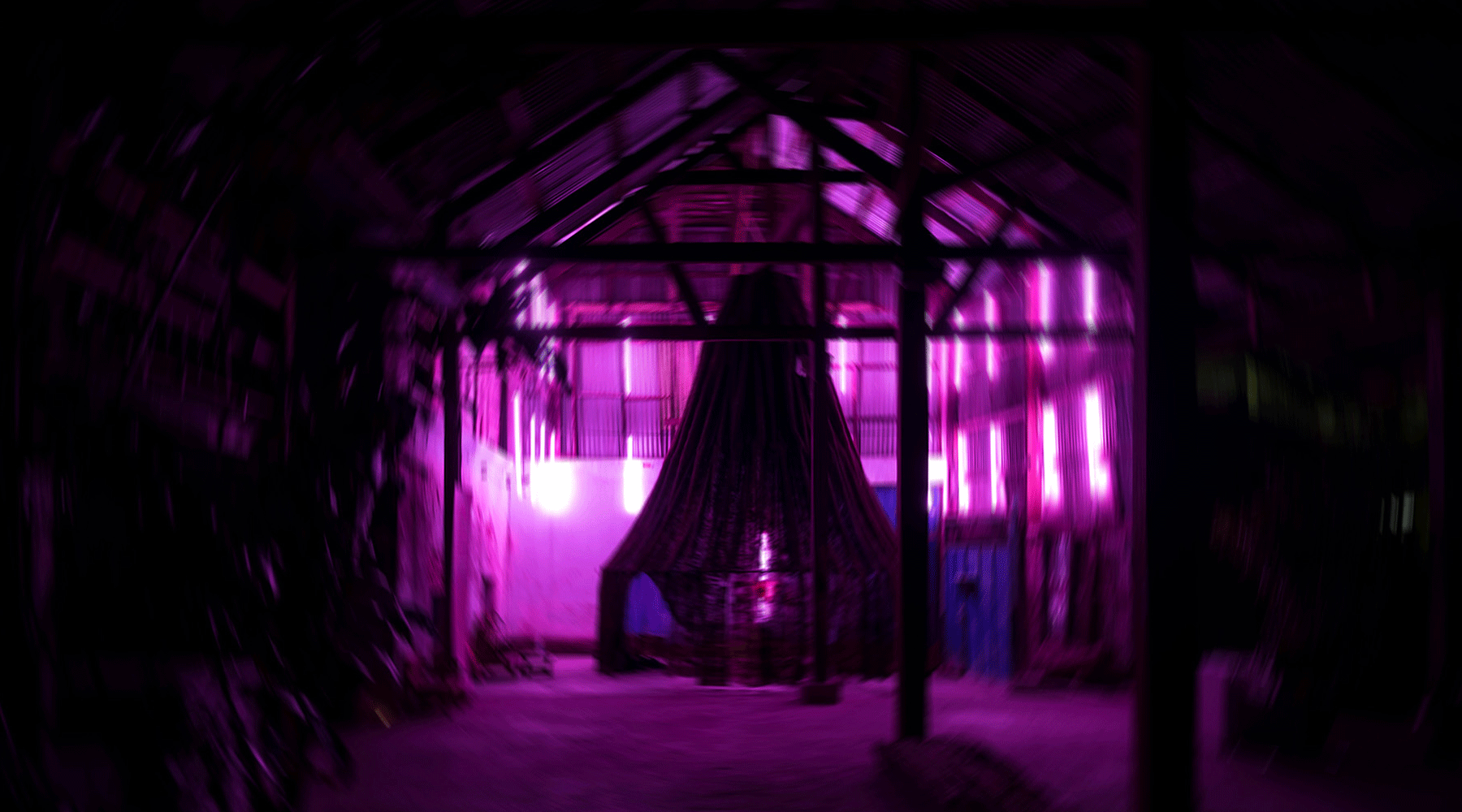
Follicle is a collective being made of discarded human hair. Made as a parliament for public collectiveness and a protocol, the hairy pavilion invites the public in and presents them with a device at the center that hosts all the necessary equipment and information for anonymously and voluntarily providing hair samples for heavy metal analysis; the data of which will be used in making a publically accessible toxi-cartography. In the early months of 2019 air pollution in Bangkok reached a record high, bringing national and international attention on the air quality in the South East Asian cosmopolitan.
Although applications such as real-time pollution maps provide an environmental reading from the exterior, such information reveals the ‘here and now’, where its record is inevitably lost through the ‘refreshing’ process of the live update and does not take increment and accumulation as factors to consider. The human body is precisely that medium which resists classification as either an interior or exterior environment, and performs as an impressionable record of its surroundings. Can a city’s toxicity be read through its living constituents? Can the living bodies that dwell, navigate, breath and process habitable environments be accessed? Can architecture retain a degree of independence while also performing as a beacon for the collective? It was found that human hair could be transformed from a material that is effortlessly and continuously grown, cut, stylized and discarded, and instead be intercepted and used in the production of public and information gathering.
Foll(i)cle was developed under two complementary elements, a pavilion and a protocol. The hairy pavilion invites the public in and presents them with a device at the center that hosts all the necessary equipment and information for anonymously and voluntarily providing hair samples for heavy metal analysis; the data of which will be used in making a publicly accessible toxi-cartography .
Project Credits: Pareid Architects (Deborah Lopez and Hadin Charbel). Colaborators: Konlawat Meklalit, Noppa-on Plidtookpai, Pitisuda Sukumalchantra, Phatsorn Mutanone. Support: Matter of Trust, Embajada de España en Bangkok, Bangkok Design Week 2019 and TCDC. Image Credits: Pareid & Visut Innadda
